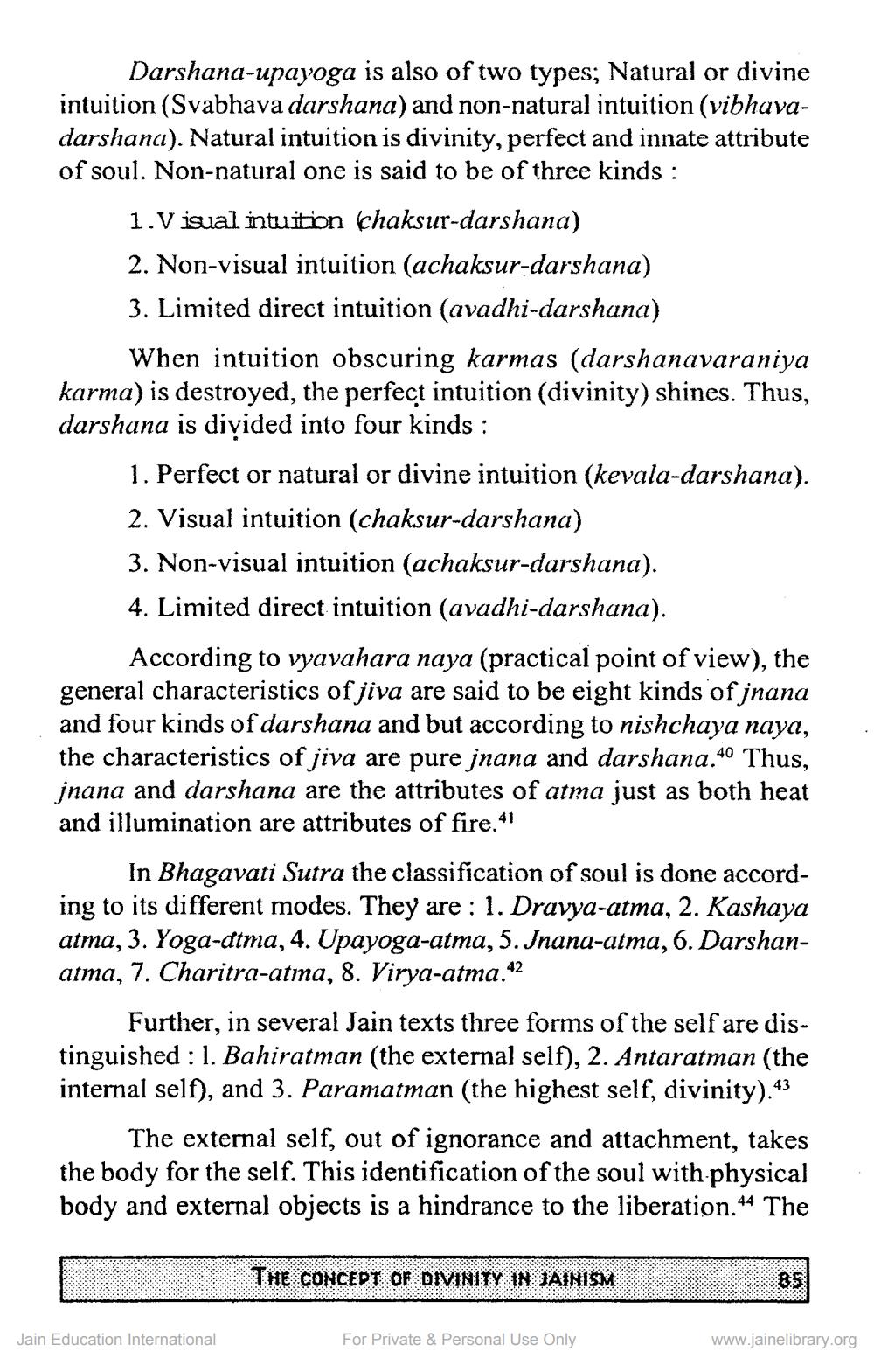________________
Darshana-upayoga is also of two types; Natural or divine intuition (Svabhava darshana) and non-natural intuition (vibhavadarshancı). Natural intuition is divinity, perfect and innate attribute of soul. Non-natural one is said to be of three kinds :
1. V isual intuition (chaksur-darshana) 2. Non-visual intuition (achaksur-darshana) 3. Limited direct intuition (avadhi-darshana)
When intuition obscuring karmas (darshanavaraniya karma) is destroyed, the perfect intuition (divinity) shines. Thus, darshana is divided into four kinds :
1. Perfect or natural or divine intuition (kevala-darshana). 2. Visual intuition (chaksur-darshana) 3. Non-visual intuition (achaksur-darshana). 4. Limited direct intuition (avadhi-darshana).
According to vyavahara naya (practical point of view), the general characteristics of jiva are said to be eight kinds of jnana and four kinds of darshana and but according to nishchaya naya, the characteristics of jiva are pure jnana and darshana.40 Thus, jnana and darshana are the attributes of atma just as both heat and illumination are attributes of fire.
In Bhagavati Sutra the classification of soul is done according to its different modes. They are : 1. Dravya-atma, 2. Kashaya atma, 3. Yoga-dtma, 4. Upayoga-atma, 5. Jnana-atma, 6. Darshanatma, 7. Charitra-atma, 8. Virya-atma.42
Further, in several Jain texts three forms of the self are distinguished : 1. Bahiratman (the external self), 2. Antaratman (the internal self), and 3. Paramatman (the highest self, divinity).43
The external self, out of ignorance and attachment, takes the body for the self. This identification of the soul with physical body and external objects is a hindrance to the liberation.44 The
I
THE CONCEPT OF DIVINITY IN JAINISM
85
100003
Jain Education International
For Private & Personal Use Only
www.jainelibrary.org




